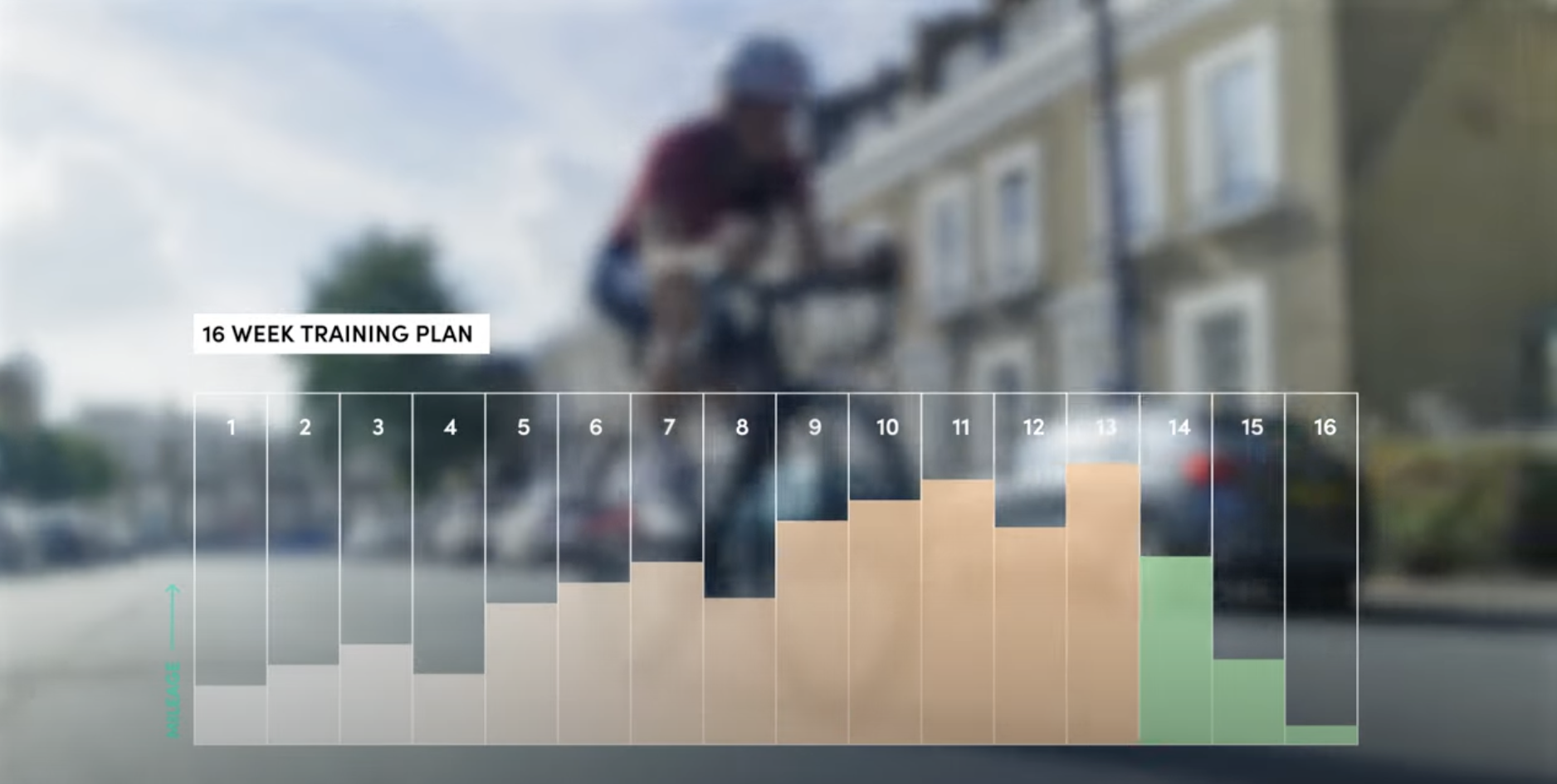How Do You Taper For a Marathon?

Some runners love it, others hate it, but either way, tapering is an essential part of a build up to any race, whether it’s an elite running a major marathon or someone lining up for their first marathon or half marathon.
Here’s everything you need to know about tapering for a marathon. If you want to know how to taper for a 5km, 10km, half marathon or ultramarathon, then jump below.
And here are the Do’s and Don’ts of Tapering.
WHAT IS TAPERING FOR A MARATHON?
In the final two or three weeks before a marathon we gradually reduce the volume and intensity of our runs to make sure we’re feeling recovered and ready for race day.
This doesn’t mean that you stop running. You should maintain a similar running schedule as during your training, only you will do slightly shorter runs, and slightly less intensity in your harder workouts. Doing this means you’re still doing quality runs to maintain your fitness, but you’re also allowing yourself time to recover.
WHY DO YOU TAPER FOR A MARATHON?
The peak weeks of marathon training are the most challenging as you’ve got your longest runs to complete, which for most people will be 16-22 miles / 25-35km or up to four hours. You’ll typically do your longest run three or four weeks before your race.
Long runs are essential to get your body feeling prepared for race day, but they are hard work and are going to leave you fatigued – physically and mentally. Add the weekly workouts to that and it’s a lot of impact and effort on your body over several months.
You don’t want to be carrying that fatigue with you to the start line, so after a progressive build up of training, you taper down over two or three weeks to help recover from the hardest training weeks without losing the great fitness you’ve built up.
The taper takes all your training and then refines it and sharpens it ready to help you have the best race experience.
DO YOU STILL RUN WHEN TAPERING FOR A MARATHON?
Yes, definitely! You want to maintain your fitness from your training, but now isn’t the time to try and get fitter and faster. The running you do is about sustaining your marathon fitness while feeling fresher and less tired because you are reducing your amount of running.
You want to follow a similar running routine from your training. So if you’re used to running on Monday, Tuesday, Thursday and Saturday in your training then do that in your taper, just run a bit less on each day – you can reduce each run by 25-50% based on your peak weeks.
Now is also the time to get really familiar with your goal race pace, so run this pace in a couple of workouts. Add some strides to keep your legs moving faster as well.
HOW LONG SHOULD YOU TAPER FOR?
Some runners like a three week taper, others prefer a two week taper. There’s no real positives or negatives to either, so it’s personal preference – you just need to find a balance which means you’re doing the right amount of training to ensure you feel ready for race day without doing too much and being tired, or too little and feeling unprepared.
Either way, it’s likely that your longest training run will be three weeks before your marathon (around 20-22 days before the race). A three week taper will therefore begin right after your longest run. A two week taper maintains one more week of (slightly) higher volume before you properly taper down.

WHAT DOES A THREE WEEK TAPER LOOK LIKE?
If you choose a three week taper, then it begins after your longest run. From there you want to reduce your running volume by around 25% in the first week.
You should still do a similar schedule to your peak week, just reduce every run by 25% – including the long run. This means if you did a 20 mile (32km) long run three weeks out, then you’ll do a 15 mile (24km) long run two weeks out. If your usual easy run is 40 minutes, then it’ll become 30 minutes, and if you did 8 x 800m as a workout, then you’ll do 6 x 800m – you can also now make the pace similar to marathon pace.
Then in the second week of the taper you’ll reduce the volume of each run by another 25%, so the long run is 9-12 miles / 15-20km. The easy run is around 20 minutes, and if you want to do some faster running, then try 4 x 800m at marathon pace.
The week leading to your marathon will be mostly easy runs – we cover that below.
WHAT DOES A TWO WEEK TAPER LOOK LIKE?
If you do a two week taper, then you will do a harder drop in mileage from your peak week.
Your longest run will still be three weeks out from your race. The week after this, you could hold the volume the same or reduce slightly, but your focus this week is on preparing for a quality long run. This can be the same as your peak week or 10% less, but prioritise proper fuelling and aim for some marathon pace in the run – treat this like a full dress rehearsal for race day.
You’ll now have 13-15 days until your race. In your taper you’ll keep a similar running schedule to your peak week, only now you’ll reduce the mileage by 30-50% for each run. So your easy runs go from 50 minutes to 30 minutes, the 5 x 5 minute reps become 3 x 5 minutes. The final longer run of your marathon block will be around seven days before the race and will be 9-12 miles / 15-20km.
Of course, if you find that you’re feeling fatigued near the end of the week, then consider an extra rest day. Now is the time to focus on recovery, not cramming in extra running.
WHAT RUNNING DO YOU DO IN THE WEEK BEFORE A MARATHON?
You want to carry on running in the week before your marathon, but now isn’t the time to try and cram in any final fitness.
Focus on a few easy runs. If you want to practise running your race pace, they you can do one controlled workout where you do a few short blocks at marathon pace – 3 x 5 minutes, 2-3 x 1k, or a 15-minute block, at marathon pace is enough.
Add one extra rest day to your usual running plan.
The priority now is to focus on rest and recovery, and on getting well-hydrated and eating well (especially if you’re carb-loading for a marathon).
Just one warning: despite running less and feeling more rested, many runners find they suffer from ‘maranoia’ in the taper. It’s a paranoia that you aren’t ready, or you feel phantom niggles. Everyone experiences this, so don’t worry. Trust that you’ve done the training and that this more restful week will leave you feeling great on race day!
Here’s Jess talking about what to do in the week before a marathon.
WHAT ELSE SHOULD I DO IN THE TAPER?
By running fewer miles you’ll have a little extra time. You can use this to enjoy some extra sleep, or spend it working on mobility or foam rolling, or any other activities that help you feel relaxed.
Tapering doesn’t just mean running less, it means focusing more on recovery, so spend time doing the things which help you feel more relaxed and recovered. Try to get more sleep and eat a nutritious diet.
You’ve done all the hard work over the previous few months, so now’s the time to get your body and mind ready for the race.
HOW DO YOU TAPER FOR A 5km, 10km OR HALF MARATHON?
You want to taper towards any goal race because the true purpose of tapering is to give yourself the best chance of running a great race. Here’s some advice on what to do in the final week before a half marathon.
If it’s a half marathon then you should follow a two week taper (so your longest training run will be roughly 14 days before your race, while a 5km or 10km may only need a 7-10 day taper.
The same advice for the marathon works here – stick to the same routines you know, just reduce your volume and intensity.
HOW DO YOU TAPER FOR AN ULTRAMARATHON?
We recommend a three week taper for an ultramarathon. The main difference will be the length of your longest long run, which you’ll do three or four weeks before your race. Then you’ll gradually reduce your mileage as you would in a marathon. You can do the same approach as the marathon and reduce by 25% each week, then take your final week very easy – only do the runs which you think will help you prepare for the race psychologically. You’ve done all the physical work you can, so these runs are for your mind!
***
How do you approach a taper? Do you love it or hate it?



























Running News
Ingebrigtsen Stars at World Athletics Indoor Championships 2025 – Plus All The Winners!
Sam Ruthe Is First 15-Year-Old To Run A Four-Minute Mile!
Eliud Kipchoge Will Run The 2025 Sydney Marathon!